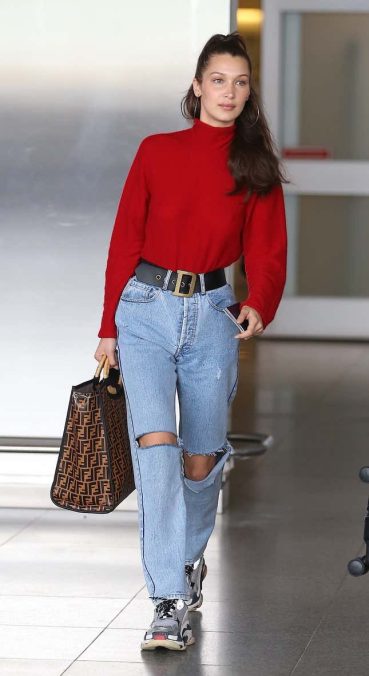How to Dress For the End of the World
Latest

The shearling jacket is the iconic fashion staple of the apocalypse. It’s protected Rick Grimes in The Walking Dead, Regan Abbott in A Quiet Place, and even Ryan Gosling’s Agent K in Blade Runner 2049.
Characters in many on-screen apocalypses—pandemics, zombies, fires, floods, wars—assume certain uniforms of practicality and not just shearling jackets, but also heavy-duty denim, leather, flannel, and industrial boots. Those catastrophes are fictional, but our anxieties about the collapse of human society in the real world are not—and the proof is in our closets. Today, with practical and utilitarian fashion, it seems we’re subconsciously suiting up for the end of the world.
So what’s our catastrophe? Climate, of course.
Utilitarian garments have consistently graced runways since the early 2010s, and shearling has become ubiquitous in stores from Topshop to Levi’s. Kanye designed $760 Yeezy workwear jumpsuits, and Glossier showroom employees wear millennial pink coveralls. Then there’s the millennial obsession with Carhartt, overalls, Blundstone and Doc Martens boots, fanny packs (or “shoulder bags”), sneakers, beards, short and easy-to-manage haircuts, denim, kerchiefs and more. It’s part of a bigger trend in American fashion that has merged style with practicality, utility, and durability.

“Seeing climate change as apocalyptic is definitely at play here, even if it’s in a subtle, unacknowledged way,” Deirdre Clemente, a cultural historian at the University of Nevada, Las Vegas, told Jezebel. “So many things in fashion are.”
Earth’s average temperature has been creeping up since the industrial revolution, and we’re seeing the effects. Glaciers have shrunk, sea levels are rising, and heat waves are more intense and last longer. Right now, wildfires ravage America’s west coast (including California’s largest ever), eating up countless homes and displacing over 38,000 people. So far this year, heat waves have killed 70 in Canada, 90 in Japan, and 65 in Pakistan.
It’s only going to get worse. As a New York Times Magazine feature, “Losing Earth: The Decade We Almost Stopped Climate Change,” recently outlined, a three-degree increase means losing most coastal cities and that forests would sprout in the Arctic. Four means a perpetual European drought, and much of Asia would turn into desert. A five-degree temperature increase “has prompted some of the world’s leading climate scientists to warn of the end of human civilization.”
The turn toward practical fashion is a reaction to the knowledge that life on Earth—at least as humans know it—is slowly dying.
The turn toward practical fashion is a reaction to the knowledge that life on Earth—at least as humans know it—is slowly dying. Our apocalypse is coming and our anxiety is woven in cloth and written across our bodies. “Fashion is a manifestation of our inner psyche,” Sara Idacavage, a fashion historian at Parsons School of Design, told Jezebel. “It’s a manifestation of our hopes and dreams, but also of fears and panic.”
Just as our apocalyptic fears are expressed through practical fashion, women have done the same in other moments of uncertainty. During the world wars, practical, military-inspired fashion was splashed across the pages of Vogue.
-

-

-

-

-

-

-

-

-

-

-

-

-

-

-

-

-

-

-

-

-

-

-

-

-

-

-

-

-

-

-

-

-

-

-

-

-

-

-

-










































